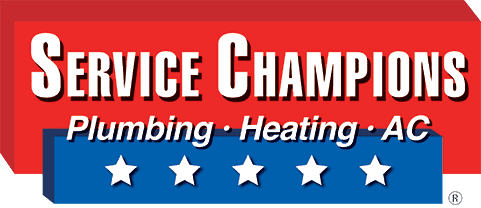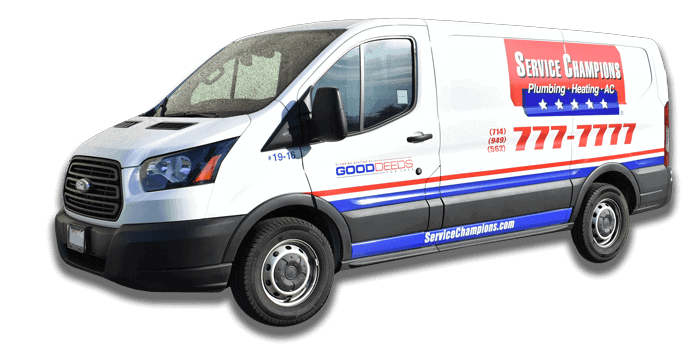How to Protect Your Home Against Microbiological Growth
The basic function of air conditioning is a heat transfer. Whether you’re trying to cool or heat your home air, heat and moisture are added and subtracted from the air supply in order to achieve a comfortable temperature. Condensation is the process by which moisture is removed from the air, especially in air conditioning. This, however, results in a collection of water that can lead to microbiological growth.
How It Works
The air conditioner is made of two major components. The first component is the condenser unit, the large box that sits outside in the backyard. The condenser unit is responsible for compressing refrigerant from a gas state to a liquid state before sending it to the evaporator coils.
The second component is the evaporator coils which are a box of snaking coils that sits on top of the furnace. The evaporator coils are responsible for absorbing heat. Particularly in air conditioning, refrigerants pumped through these coils, bringing them down to a very cold temperature. As ambient home air passes over them, the air is cooled while the coils absorb the heat and moisture from the air.
As condensation takes place with this heat transfer, water is collected. To remove this water, the central air system has a small network of drain pipes and drain pans that collect water and routes it to an external site for disposal.
What You Should Know About Indoor Air Quality
Evaporator Coils and the Dark Spaces of the Air Conditioner
When these drip pans are not maintained, water grows stagnant and because there is little ventilation or light source inside of the air conditioner, it becomes a perfect breeding ground for microbiological growth. Many times, our technicians find such growth present in the evaporator coils or in dirty drip pans. Ultimately, microbiological growth can enter the air stream and into the home.
Air Ducts with Poor Insulation
A second area where microbiological growth can occur is within the air ducts themselves. A large majority of air ducts are kept in the attic of the home where air is musty and the space is dark and hot. Whenever the air conditioning is on, cooled and conditioned air is carried through the ducts to dispense into the rooms of the home.
Unfortunately, the cooled air is separated by the hot attic air (sometimes reaching 130 to 140 degrees) only by the air ducts themselves. Poor insulation heats the air contained in air ducts which results in water formulating inside. With moist air ducts, little light and hot attic temperature, microbiological growth easily manifests and directly infects the air supply.
A Three-Fold Solution and Duct Sealing
HVAC technology now supplies advanced methods of protecting your home and air from microbiological growth. Our technicians have helped hundreds of families every year from poor indoor air quality and ill-maintained central air systems.
There are several types of solutions you can choose to defeat biological growth and each functions a bit differently from the other.
1. Biocide Chambers
Biocide Chambers are UV light systems that are fixed into the evaporator coil. Because the coils are dark and damp, it is the primary location for microbiological growth. Imitating the sun rays’ effects on destroying algae and other growths in water, Biocide Chambers are lamps that emit UVC rays inside the evaporator coils that work to defeat any chance for growth in your air conditioner.
2. Air Scrubber
The Air Scrubber is an active method of destroying microbiological growth and airborne pathogens. It is a product that integrates itself into the air stream and releases friendly oxidizers such as hydrogen peroxide to the home. The Air Scrubber works to search for microbiological growth and deconstruct it into harmless particles.
3. Upgraded Filtration System
Air filters are not all one and the same. There are different types of filters with different scores for particular purposes. Most central air systems come with a filter with a score between MERV six and eight. In order to protect your air against airborne pathogens and particles, we recommend a filter with a MERV rating of 10 or above. These filters works to strain the air of small particles that would otherwise pass through and enter the air stream.
Another option to a MERV 10 filter would be the BioGuard Power Filter, which performs in similar fashion.
It is common to find that homes use a combination of these products and systems to prevent microbiological growth. In fact, well-guarded homes employ all these tactics including duct sealing.
4. Duct Sealing with Mastic
Sealing the air ducts of your home is a great idea for several reasons.
- Prevents airborne particles and pathogens from the attic from entering the air stream
- Prevents conditioned air from escaping into the attic instead of dispensing into the home
- Prevents dirty attic air from contaminating conditioned air supply
- Promotes air conditioning efficiency
- Protects air temperature consistency
Some HVAC technicians may use duct tape to seal your ducts. Unfortunately, this is not a good idea or one that lasts long because duct tape loses its adhesive properties as it dries out. Usually, duct tape sealing lasts up to a maximum of six months.
Instead, speak to your preferred HVAC technician about mastic sealing. Mastic is a tar-like substance that seals, holds and fills holes so that no air can escape or enter. Proper insulation is also necessary to avoid condensation and compromised temperatures.
Service Champions Protects Indoor Air Quality
Families today are more educated than ever on the importance of high indoor air quality. Using your central air system as a method of cleaning and protecting the air you breathe is an excellent choice.
Our teams can help you reach the potential of clean and protected air. Each technician trains for 150 hours every year on new technology so that your technician arrives at your home with the most advanced methods available.
All members pass drug tests and background checks. For your additional security, we send an e-mail containing the photo ID of your technician prior to your service date.
If you would like to learn more about any of these services or schedule an appointment at a time best for you, please call one of our friendly representatives in our call center for help.

